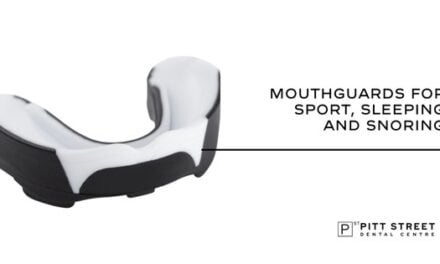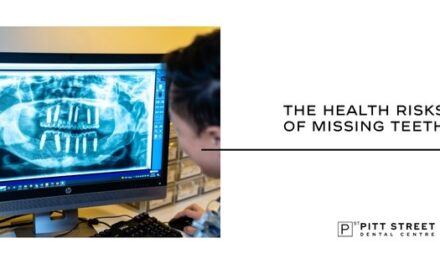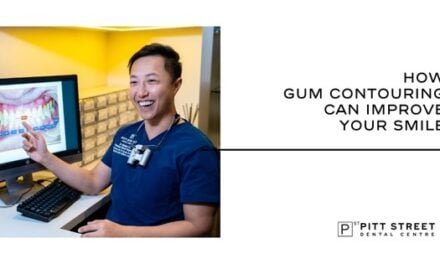What You Need to Know About Tooth Fillings

At Pitt Street Dental Centre, we experience people every day who have some type of fear of the dentist, particularly the idea of a filling – one person might dislike the drills while another just isn’t a fan of the needle used for anaesthetic.
Previous trauma or fear of the dentist is enough to stop most people from attending their six-monthly check up, which ironically, leads to tooth decay being left untreated and ultimately, the patient needing a filling, crown or even tooth extraction!
So what exactly is a tooth filling, why are they used and what do you need to know before you get one?
THE LOWDOWN ON TOOTH DECAY
Your teeth can become decayed or damaged for a number of reasons, from a high amount of sugar or soft drink to bacteria from not cleaning your teeth properly. These factors can weaken the enamel of your teeth, causing a cavity.
When decay sets into one of your teeth, that tooth becomes compromised; if a dentist does not treat the decay, it will continue to cause more damage to the structure of the tooth.
One way to stop the decay from spreading and repair the damage to the tooth is with a tooth filling, which is a type of restorative dentistry.
THE HISTORY OF THE DENTAL FILLING
Tooth fillings actually date back thousands of years. In 2017, the skeletal remains of a person who lived approximately 13,000 years ago were found in Italy.
The skeletal remains showed signs of trauma around the teeth, with researchers concluding the person had scraped out decayed tissue in the tooth with a hand tool. Unbelievably, inside some of these enlarged cavities were traces of bitumen, likely used as an antiseptic or ice-age-era filling!
Dental fillings today are done with more technology and far less ancient hand tool scraping; we also promise that no bitumen is used in your fillings.
DIFFERENT TYPES OF DENTAL FILLINGS
There are a few common types of dental fillings.

COMPOSITE RESIN
These fillings are the preferred filling used by the Pitt Street Dental Centre’s team of professional dentists, as composite resin blends into a patient’s teeth, adheres to the tooth better and is hardened in just a few seconds.
Composite resin is a soft kind of plastic that is matched to the colour of your teeth, allowing it to be easily moulded into your cavity and mouth, before it is hardened and bonded to your teeth with UV light.
Composite resin is also preferred because generally, less of the tooth needs to be removed to prepare for the filling. With some other types of fillings, such as dental amalgams, more of the tooth may need to be drilled away to ensure better adherence.

DENTAL AMALGAMS (SILVER FILLINGS)
Dental amalgams are silver-coloured fillings that are made up of mercury and silver-based alloys. This restorative material was introduced to the western hemisphere in the 19th century and for the past 150 years; it has continued to be a popular filling material.
Dental amalgams have been popular because they are cost-effective and durable, lasting 10-15 years on average. However, in recent times, public understanding and awareness of the implications and dangers of using mercury have increased, leading to a rise in patients and dentists opting for alternative filling materials.
The World Health Organisation (WHO) Consensus Statement on Dental Amalgam, published just over 20 years ago, notes that “dental amalgam restorations are considered to be safe and effective”, stating: “The small amount of mercury released from amalgam restorations, especially during placement and removal, has not been shown to cause any other adverse health effects.”
While- the use of dental amalgam fillings have been banned or limited in a number of countries, it is still widely used in dental clinics across Australia. However, at Pitt Street Dental Centre, we are a mercury-free practice, so you won’t find any dental amalgam within our clinic.

CERAMIC INLAYS (PORCELAIN FILLINGS)
Often the more time consuming option, ceramic inlays require more than one dentist visit! While composite resin fillings can be done on the spot, ceramic inlays require an impression to be made of the cavity.
To make the dental filling, the impression is sent to a lab, where the personalised ceramic inlay is made to fit your cavity.
A ceramic inlay also reinforces the structure of the tooth; like a jigsaw puzzle, the inlay fits perfectly into the tooth and is cemented in, giving your tooth the support it may have been lacking.
AFTER CARE FOR YOUR TOOTH FILLING

So you’ve been to the dentist, felt numb, had some drills poking around your teeth and finally, received a new tooth filling. What now?
If you have had your composite dental filling at Pitt Street Dental Centre, your filling will be cured by the time you say goodbye to us! However, just after your procedure, your dentist may advise you not to eat, chew or drink until the anaesthetic has worn off – this is to avoid accidents, such as chomping down on your cheek, lip or tongue, or burning your mouth on a hot drink.
When it comes to aftercare, the most important tip our dentists at Pitt Street Dental Centre have is to keep up with your oral hygiene routine! Brushing twice daily, flossing and having regular checkups with our friendly, professional team will minimise the likelihood that you will need another filling in the near future.
If you’ve been putting off that trip to the dentist, don’t delay any longer – contact Dr. Cai and the Pitt Street Dental Centre team today for compassionate, caring and professional dental care.
The content has been made available for informational and educational purposes only. Pitt Street Dental Centre does not make any representation or warranties with respect to the accuracy, applicability, fitness, or completeness of the content.
The content is not intended to be a substitute for professional personal diagnosis or treatment. Always seek the advice of your dentist or another qualified health provider with any questions you may have regarding a dental or medical condition. Never disregard professional advice or delay seeking it because of something you have read or seen on the Site.
Services We Mentioned:

Tooth Fillings

Restorative Dentistry










































